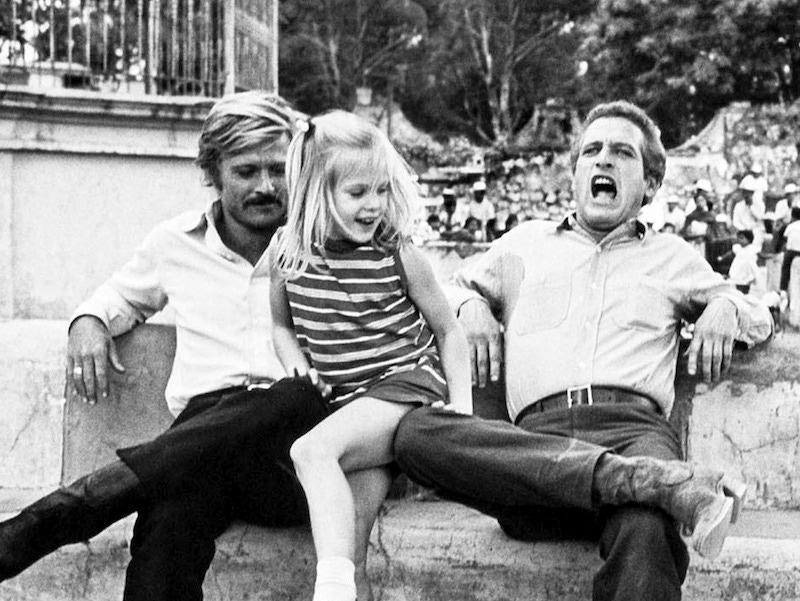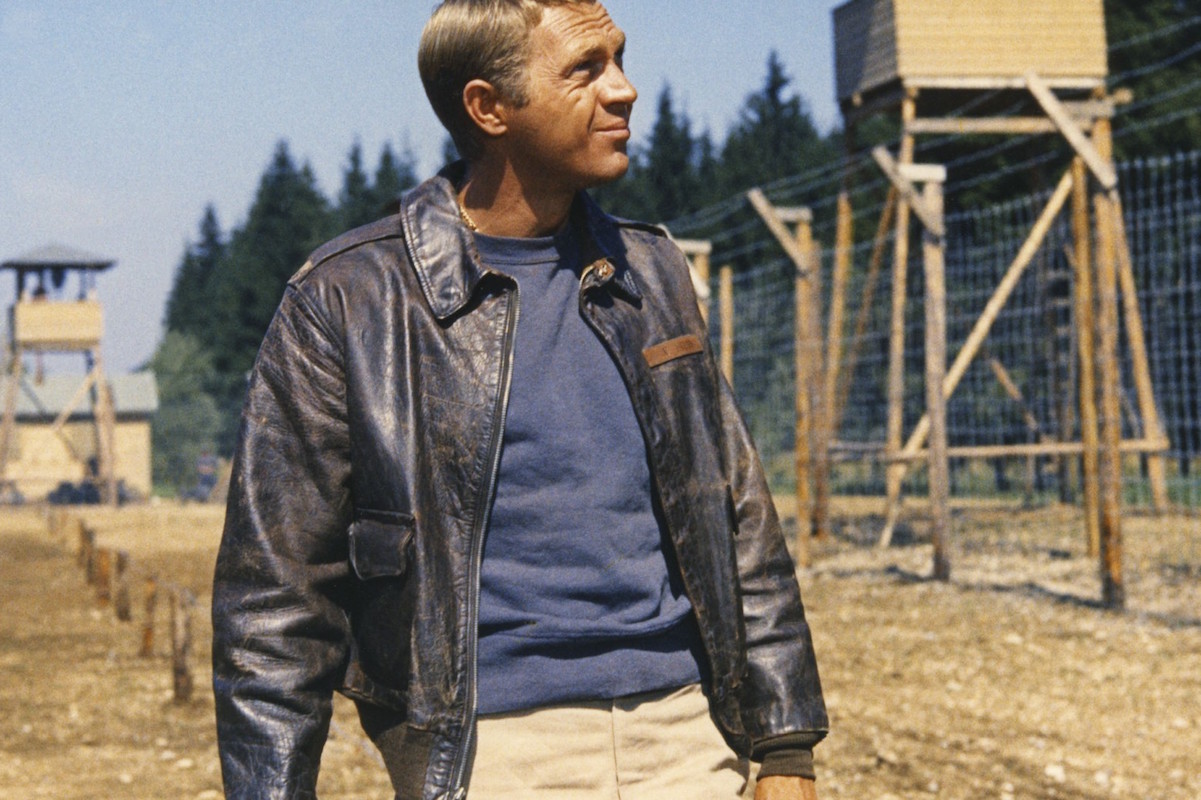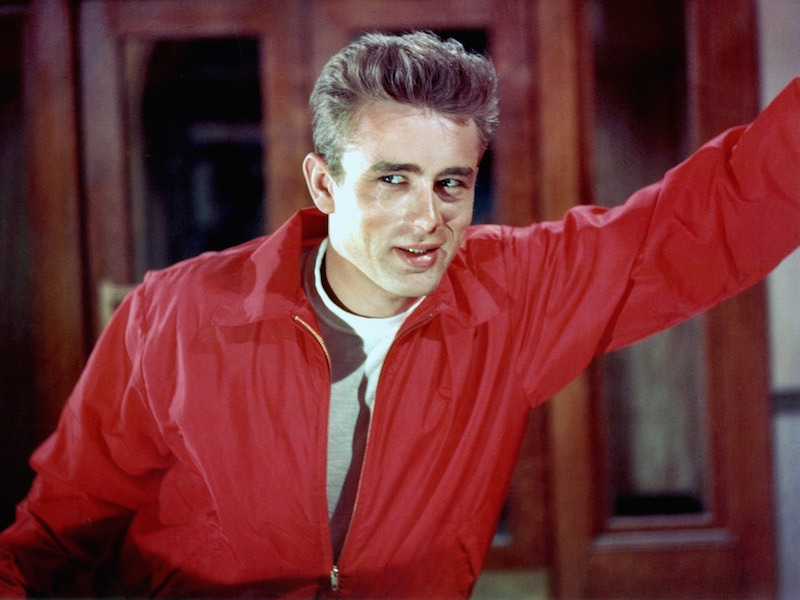Steve McQueen: The Watches
The "King of Cool," had a close affinity with many of lifes dangers, but to navigate him or his characters through, was a selection of some of the greatest timepieces in history.

(Un)Popular Opinion
Before we get into it, allow us start off by joining our friend, Jake Ehrlich to categorically denounce the further false association of the 1655 Rolex Explorer II with the name, Steve McQueen. The "King of Cool," never wore a 1655. Jake’s gone the mile to interview his ex-wives and, Chad McQueen, his son, to confirm this fact on behalf of everyone. Therefore, anyone, labeling the 1655 with McQueen’s name, you are spreading misinformation. End rant. Sorta. Read more about the 1655, here. The watch that is correctly most associated with McQueen in pop-culture, is the Heuer Monaco, which was a prop obtained for him for the 1971 passion project film, Le Mans. In an interview with quillandpad.com, Don Nunley, the prop master for Le Mans, recounts the entire tale of the challenge of finding McQueen the right wristwatch for the film, who was at the height of his career at this point after the success that was The Thomas Crown Affair and Bullitt.

Nunley recounts that it was McQueen himself who picked out the Monaco with the blue dial that has become a mental image tattooed into all of human consciousness. What’s funny and an admission of Nunley’s own, is that there wasn’t one, but in fact, six instances of the Monaco availed for Le Mans. The first piece simply went missing and remains unaccounted for. The second piece was with McQueen for the duration of the filming of Le Mans. Nunley kept hold of the remaining four, in case he needed to replace the one with McQueen due to damage and such. One of these four was especially set aside, unused and unblemished for close-ups and PR photography. There’s further to the anecdote that Nunley shares of the hilarious fates in later years, of the five watches that were on set. We strongly urge you have a read of the complete interview with Nunley here, on quillandpad.com. But the point to impress upon here, is that the Heuer Monaco wasn’t necessarily a watch of McQueen’s, rather one that was put on his right wrist — because McQueen personally wore his watch on his right wrist — for the purpose of the Le Mans film.
Early Life and McQueen’s First Timepiece
So, what were some of the watches that McQueen did own? For this we have to start at the very beginning. Terrence Stephen McQueen was born on the 24th of March 1930 in Beech Grove, Indiana. William McQueen, his father, left Julia Ann, his mother some six months after having met her. Julian Ann who was not ready for motherhood, for various reasons, left her son with her parents and while these were days in the middle of the Great Depression, her parents took Steve and moved into a farm that belonged to an uncle of Julia Ann’s, Claude (her mother’s brother). Difficult early days, no doubt, but Steve has gone on record to say that his memories of his days on the farm were good ones and that he learned a great deal from his great-uncle Claude, who seems to have been a positive influence on young Steve.

It was Claude who gifted Steve a red tricycle for his fourth birthday that is attributed for having sparked his interest in racing later in life. At the age of eight, Julia Ann, came to retrieve Steve from the farm to have him live with her and her new husband. When departing, Steve’s great-uncle Claude gave him a going away present, a gold pocket watch, which was inscribed, “To Steve – who has been a son to me.” The next few years were difficult and troubled still, with Steve being thrown back and forth between living with his mother and great-uncle Claude, abuse at the hands of his stepfather(s) — yup Julia Ann got married a third time — petty crime and becoming entwined with street gangs. His “homelife” landed him in a correctional facility, the California Junior Boys Republic, where Steve managed to turn over a new leaf towards some semblance of maturity. He was required to leave the facility at the age of 16 but maintained a lifelong relationship with Boys Republic. The next few years saw Steve living the life of a drifter, from odd job to odd job until he had himself enlisted with the Marines, in 1947. He got into his fair share of trouble in the army, but he resolved his best behavior after an accident during an exercise in where he had to save the lives of five of his fellow Marines. Steve was honorably discharged in 1950.


The Sinatra Effect
Using his GI Bill, Steve started attending acting classes at Sanford Meisner's Neighborhood Playhouse and at HB Studio in New York, earning money on the side by taking part in weekend motorcycle rases at the Long Island City Raceway, eventually enabling him to buy two objects of his first desire, motorcycles: a Harley-Davidson and a Triumph, to be specific. He ended up relocating to California to seek more acting opportunities in 1955, which allowed him his first film opportunity: a small role in Somebody Up There Likes Me, directed by Robert Wise and starring Paul Newman. His first own leading role came to him in the 1958 film, The Blob. But ultimately his big break came to him when the one and only, Frank Sinatra allowed him a role in the 1959 film, Never So Few. Sinatra saw something special in Steve and made sure the young actor got more than his fair share of close ups. The role also set in motion a role type that Steve McQueen would go on to fill in proceeding years. It is in the wave of these developments that we spot the next watch attributed to Steve, the Hanhart 417 chronograph. Whether the watch was the stainless-steel variation with the “ES” added to the reference number or the chromed brass variation remains a mystery, however, many seem to agree that he was wearing the ES variety.
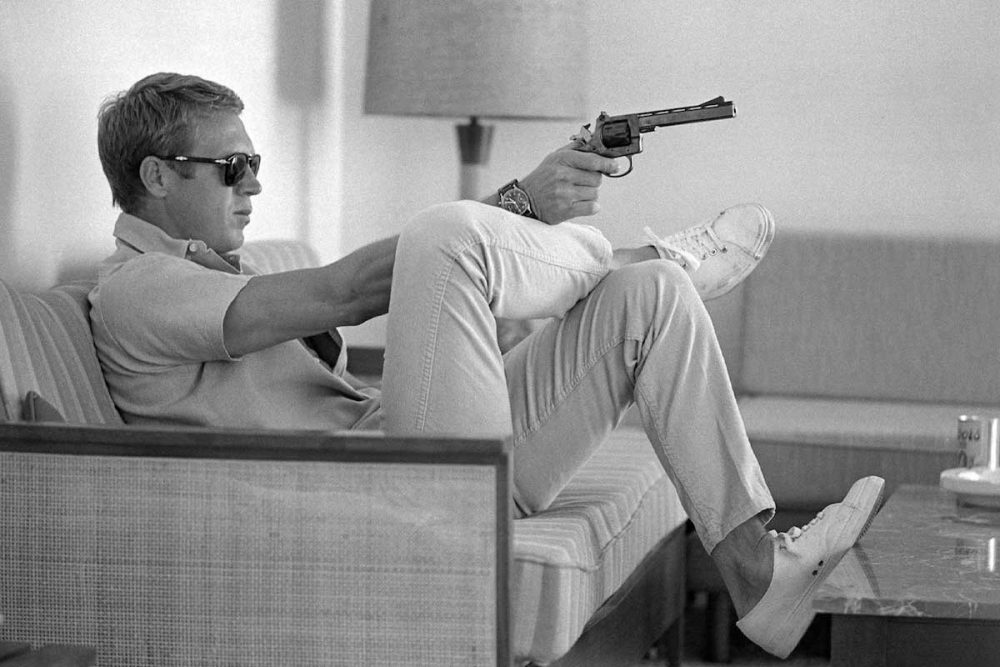

Speculations aside, what we can suggest for sure is that this is the watch he is wearing on a bund strap, on his right wrist, in the iconic 1963 photograph of Steve as he’s sitting on a sofa in his home in Palm Springs, California aiming a handgun. Steve was clearly fond of his 417. Revolution’s founder, Wei Koh explains, “His affection for his Hanhart 417 was made conspicuous when McQueen went to East Germany in 1964, along with motorcycle racing specialists the Ekins brothers, to represent the United States at the International Six Days Trial (ISDT).

“Often described as the Olympics of endurance motorcycle racing, the ISDT was first established in Carlisle, England and invited five-man teams from countries around the world to a showdown in off-road motorcycle skills. It is well-known that McQueen was at this time one of the United States’ most skilled motorcyclists. Clearly before the era of massive insurance waivers, McQueen even performed the majority of his bike stunts in 1963’s The Great Escape himself. However, the famous jump over the wire fence was made by his stuntman and ISDT teammate, Bud Ekins, on a Triumph TR6C disguised as a WWII-era BMW. “In the ’60s, Ekins competed in seven ISDTs and won four gold medals and one silver. The 1964 ISDT team including McQueen were dubbed the “California Boys”; they were the first American team to ever compete in the ISDT and McQueen had the honour of carrying the Star-Spangled Banner in the opening ceremony.”
An Affair with the Crown
1966 is roughly about the time that we manage to place the next timepiece that Steve McQueen owned, the Memovox. Not much is known about what specific version of the Memovox Steve owned, but it was with him for quite a while making its way all the way to an appearance in the 1968 heist film, The Thomas Crown Affair. The Thomas Crown Affair is interesting and important in Steve McQueen’s repertoire because it allowed “The King of Cool,” to break away from only playing the rebel character and showcase the breadth of his acting chops. It’s also interesting for the timepieces featured on Steve’s person, befitting of the Thomas Crown character. In the film’s first scene, Crown checks his gold Patek Philippe pocket watch, which is hung double-Albert style with a fob drop. The next watch featured in the film is the aforementioned Memovox. The last watch, a personal favourite, is the Tank Cintrée, which is often wrongly listed as a the Tank Américaine. This is simply not possible because the Américaine wasn’t released until 1989. But, of course, it’s important we establish that the Patek Philippe pocket watch and the Tank Cintrée, were not Steve’s personal watches.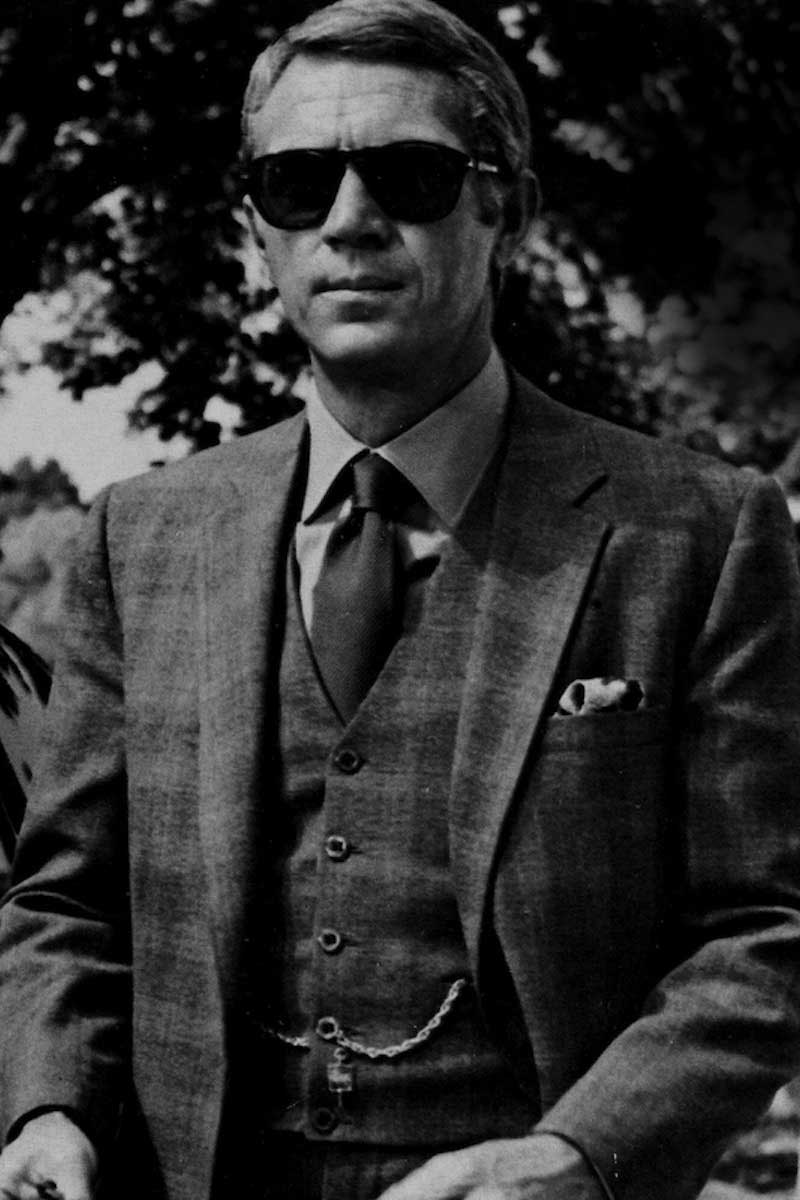



Where there are as many watches attributed to McQueen, which weren’t personally own by him, his interest in cars and motorbikes, and therein the extensive array that he collected for himself is documented to a tee. So here we have to start off with McQueen’s love for the Prancing Pony and specifically his 1963 Ferrari 250 GT Berlinetta Lusso, chassis number 4891. The car was a gift from his first wife, Neile Adams, who gave it to Steve on his 34th birthday.

In an outer body experience penned by journalist, Nick Rufford who wrote about how he tracked down Steve’s actual Lusso and actually got to drive it, he shares, “Now that the car is on the start line it’s a glorious moment. I twist the ignition key and the engine bursts into life. I’m expecting coughs and splutters, but no, it ticks over as smoothly as a modern 458. Power for the Lusso comes from a detuned version of the three-litre V12 used in the Ferrari 250 GTO, the Lusso’s first cousin. The main difference is that this boasts three twin-choke Weber carburettors instead of the six in the GTO. The chassis is the same as the GTO’s; so are the disc brakes.” Read the complete story, here: driving.co.uk One of the earliest cars in his collection was the 1956 Jaguar XKSS, serial no. 713, one of 16 made. It’s the car Steve bought twice over, the “Green Rat”. And the same car that got his license suspended twice just because of the way he would drive it around Hollywood. But don’t take my borrowed knowledge on the car for too much, here’s an episode of Jay Leno's Garage, with a grinning Leno behind the wheels. The car is presently part of the Petersen Automotive Museum collection, in Los Angeles, California.

This is first and foremost an article on Steve McQueen’s watches, but since we’re into the cars for a bit, allow me one last one: the McQueen Bullitt Mustang GT 390 Fastback, from the 1968 film, Bullitt. Sure, this wasn’t a personal car, but America’s King of Cool, behind the wheels of a definitive American muscle car, that’s just a match made in heaven. It’s also what gave us one of Hollywood’s most memorable car chase scenes, simply known, today, as the San Francisco Car Chase. The car had a 390-cubic-inch V-8, which has been rebuilt since, and a four-speed manual transmission. Its movie appearance also required for the car to be heavily modified with fortified suspension, added horses, and mounts to support the movie cameras. Important to note that there were actually two Mustang GT 390s used in the filming of Bullitt, one went straight to the scrap yard, and the other sold earlier this year for $3,740,000 at Mecum Kissimmee 2020 and became the most valuable Ford Mustang in the world. Read more about the car and the sale, here: bullitt.mecum.com



Since we’re on the cars, allow me one motorbike. Can’t say I know much about motorbikes in general, so I deferred to Wei for this one, who suggested I look up the Desert Racer. Not long into researching said motorbike, it was easy to tell why the suggestion was made. The bike, specifically, was the Metisse Mk3 a choice piece of machine meat for off road racing. Steve, of course, had his personal one further outfitted to withstand the demands of desert racing and in November of 1966 is known to have gone so far as to say: “‘This rig is the best handling bike I’ve ever owned!”






In the following year, Le Mans was released. Beyond the story of the Monaco featured in the movie, on promotional materials and, not to mention, the permanent image that it forms in all our consciousnesses, a closer look at the film will remind you that the first watch that appears on screen is actually Steve’s own Submariner. In fact, there is extensive evidence from all of the behind the scenes photography from the filming of Le Mans, that at any point in time when the filming did not require the Monaco, Steve had his own Submariner on his right wrist, the 5512.







